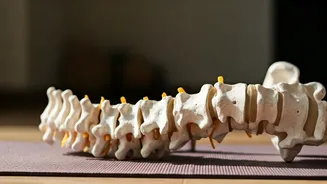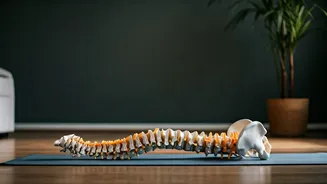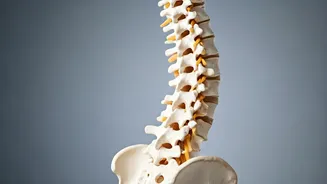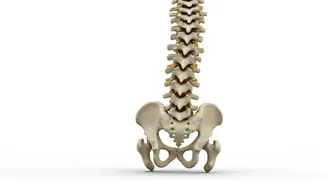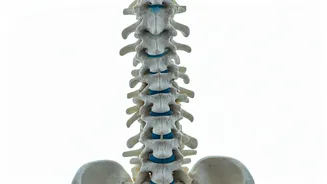The Core Principles
Effective back exercises are not only about strengthening muscles but also about improving overall posture and flexibility. Incorporating these exercises into
a daily routine can help to alleviate and prevent back pain. It's essential to start slowly and gradually increase the intensity of the exercises. This allows the body to adjust and prevents injuries. Furthermore, maintaining proper form during each exercise is critical to maximize its benefits and avoid potential harm. Focus on controlled movements and listen to your body, stopping if any pain is felt. Regular practice is key to long-term back health, making these exercises a valuable addition to a holistic wellness approach. Consider the importance of combining these exercises with other healthy lifestyle choices, such as maintaining a balanced diet and getting adequate rest. This holistic approach can significantly contribute to back pain reduction and overall well-being.
Cat-Cow Stretch
The Cat-Cow stretch is an excellent warm-up exercise that enhances spinal mobility and improves circulation in the back. To perform this exercise, start on your hands and knees, ensuring your hands are directly under your shoulders and your knees under your hips. For the 'Cat' position, round your spine towards the ceiling, tucking your chin to your chest, and gently engage your abdominal muscles. For the 'Cow' position, drop your belly towards the floor, arching your back, and lift your head and chest, looking towards the ceiling. Alternate between these two positions, moving slowly and deliberately, coordinating your movements with your breath. Inhale as you transition into the 'Cow' pose and exhale as you move into the 'Cat' pose. Repeat this sequence for about five to ten breaths. This exercise is beneficial for improving flexibility, reducing stiffness, and preparing the spine for more strenuous exercises. The controlled movements ensure that the muscles are gently stretched and warmed up, minimizing the risk of injury.
Pelvic Tilts
Pelvic tilts are a foundational exercise that strengthens the core and improves posture. Lie on your back with your knees bent and feet flat on the floor. The key is to maintain a neutral spine, where there's a slight curve in your lower back. To start, tilt your pelvis backward, flattening your lower back against the floor, engaging your abdominal muscles. Then, tilt your pelvis forward, creating a slight arch in your lower back. Alternate between these two positions, keeping your movements slow and controlled. Focus on feeling the movement in your pelvis and lower back. Repeat this exercise for about ten to fifteen repetitions. This exercise targets the deep core muscles that support the spine, helping to stabilize the lower back and improve posture. Pelvic tilts are especially useful for those who sit for long periods. They help to counteract the effects of prolonged sitting, which can lead to muscle imbalances and back pain. Regular practice promotes better spinal alignment and overall back health.
Bird Dog Exercise
The bird dog exercise strengthens the core and improves balance and coordination. Begin on your hands and knees, ensuring your hands are directly beneath your shoulders and your knees beneath your hips. Engage your core by drawing your belly button towards your spine. Extend your right arm forward and your left leg backward simultaneously, keeping your body stable and your core engaged. Hold this position for a few seconds before returning to the starting position. Repeat on the other side, extending your left arm and your right leg. Aim for about ten to fifteen repetitions on each side. This exercise is beneficial for strengthening the abdominal muscles, lower back muscles, and improving overall stability. The coordinated movements challenge the body's balance, promoting better coordination. Performing the bird dog exercise regularly can help prevent back pain by strengthening the core muscles and improving posture. Focus on maintaining a straight line from your hand to your foot during the extension phase to maximize the exercise's effectiveness.
Knee-to-Chest Stretch
The knee-to-chest stretch is an effective way to relieve lower back pain by gently stretching the lower back muscles. Lie on your back with your knees bent and your feet flat on the floor. Bring one knee towards your chest, clasping your hands around your shin. Gently pull the knee towards your chest, feeling the stretch in your lower back. Hold this position for about 20 to 30 seconds. Repeat the stretch with the other knee, then bring both knees to your chest and hold. This exercise stretches the muscles in the lower back and can relieve pressure on the spine. It helps to improve flexibility and reduce stiffness. The knee-to-chest stretch is also a great way to improve circulation in the lower back, promoting faster recovery. This exercise is easily incorporated into a daily routine and can be done anywhere, making it a convenient option for those experiencing back pain. Remember to breathe deeply throughout the stretch to enhance relaxation and improve its effectiveness.




